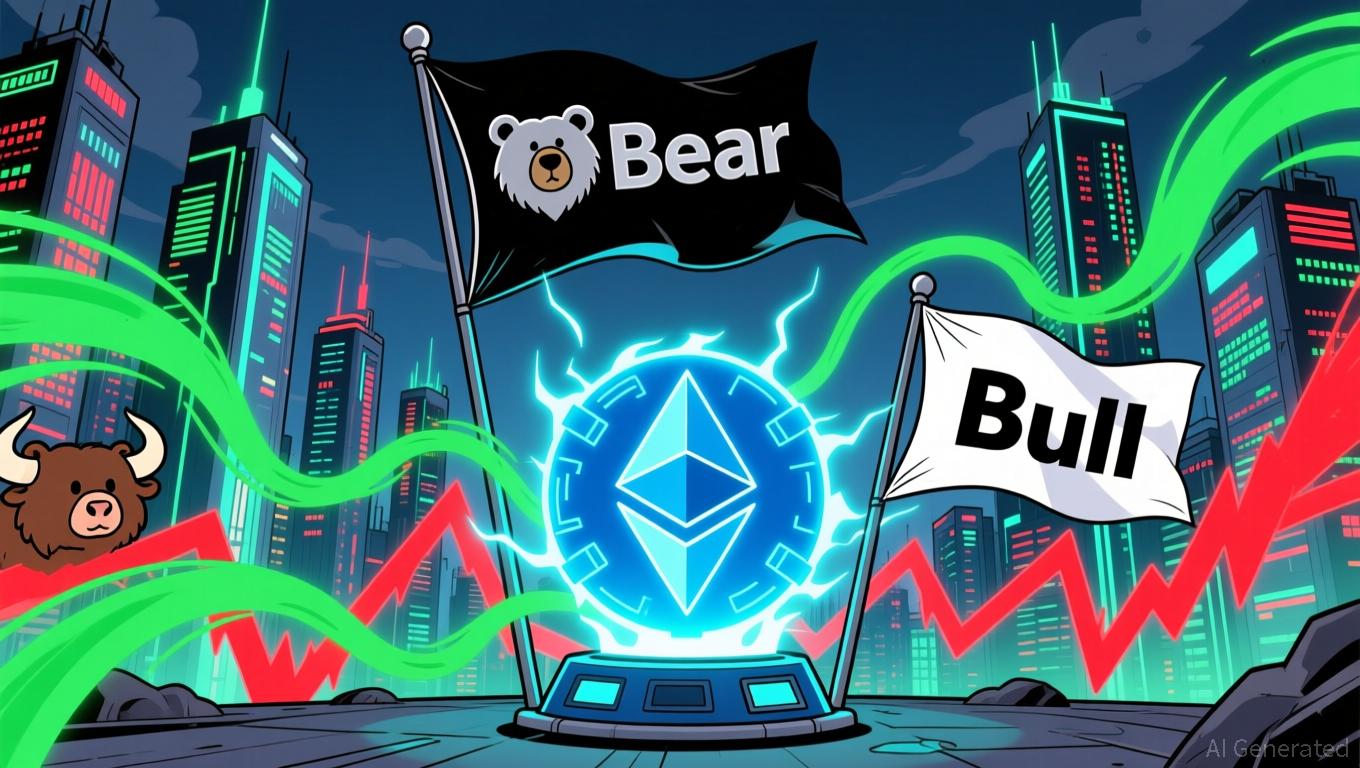Ethereum (ETH) is currently facing a challenging market, with significant short positions from institutional investors and trading platforms raising the possibility of a short squeeze after the turbulence seen in November. As of November 24, 2025, ETH is trading in the $2,800–$2,850 range, reflecting a decline of about 28% over the past month, despite some recent upward movement
according to market data
. The overall cryptocurrency market capitalization remains close to $3 trillion, and spot
Ethereum
ETFs are attracting new investments amid cautious optimism, while
Bitcoin
ETFs have experienced unprecedented withdrawals,
with BlackRock seeing $523 million redeemed
-the largest single-day outflow since these products debuted.
Broader economic factors are adding to the downward pressure.
Expectations for a U.S. interest rate reduction have diminished
, with the market now assigning a 46% probability to a 25-basis-point cut at the December Federal Reserve meeting, a sharp drop from 93.7% a month earlier. This shift has prompted sophisticated investors to increase their short bets on Bitcoin and Ethereum by $5.7 million, reflecting a move toward risk aversion
according to market analysis
. On the technical side, Ethereum’s outlook is mixed.
Experts point to resistance between $2,870 and $2,960
and highlight important support at $2,720, $2,400–$2,500, and potentially $2,200 if selling continues.
One factor offsetting the bearish trend is BitMine Immersion’s robust Ether accumulation. The publicly traded treasury has acquired almost 70,000
ETH
in the past week, raising its total to 3.63 million ETH—about 3% of all ETH in circulation—and
establishing itself as the largest public Ethereum treasury
. Despite unrealized losses estimated at $3.7 billion,
BitMine’s aggressive purchases have generated $24 billion in 24-hour spot trading volume
, helping to temporarily steady prices around $2,830. Other digital asset treasuries, however, are facing questions about their long-term viability.
BitMine’s market-to-nav (mNAV) ratio is at 0.77
, making it harder to attract new capital, while BlackRock’s proposed staked ETH ETF could disrupt the industry by providing a more transparent and cost-effective alternative to traditional DAT models.
The upcoming Ethereum upgrade in December, known as "Fusaka," could serve as a major turning point.
Aimed at improving scalability through EIP-4844
, this update may enhance Ethereum’s attractiveness for DeFi and real-world asset (RWA) tokenization, which has already exceeded $7.4 billion in value.
Analysts from Coindcx and Brave New Coin believe
that maintaining the $2,400–$2,500 support area is essential for a potential rally toward $4,000, though current bearish chart patterns and increasing selling pressure indicate the market remains fragile.
There is no consensus among traders about Ethereum’s near-term direction.
Short-term investors should keep an eye on the $2,870–$2,900 resistance zone
, as a drop below this level could lead to a decline toward the $2,200 range.
On the other hand, long-term optimists reference institutional projections
that range from $2,200 to $7,000, depending on macroeconomic trends, ETF inflows, and the outcome of the December upgrade. With BitMine’s treasury moves and regulatory developments fueling a tug-of-war between bullish and bearish forces, the coming weeks will reveal whether Ethereum can hold above the mid-$2,000s or faces a deeper pullback.
Institutional involvement in crypto continues to grow, as
Grayscale’s Dogecoin ETF (GDOG) debuts on NYSE Arca
as the first U.S.-listed spot ETF for the
meme
coin. While not directly related to ETH, this development highlights increasing regulatory acceptance of crypto-based securities, which could encourage broader institutional participation.
BlackRock’s simultaneous effort to introduce a staked ETH ETF
—offering an annual yield of 3–4%—may further transform the market by providing a transparent alternative to existing DAT products.
